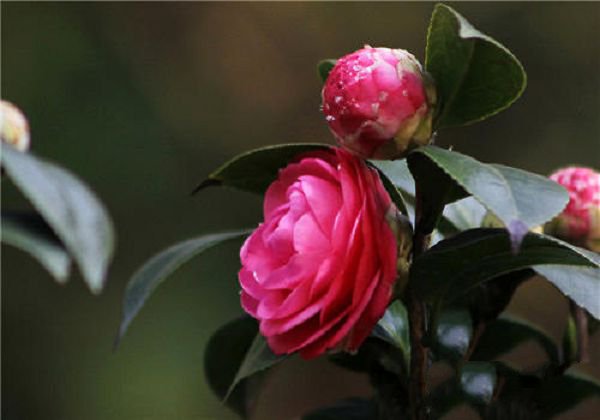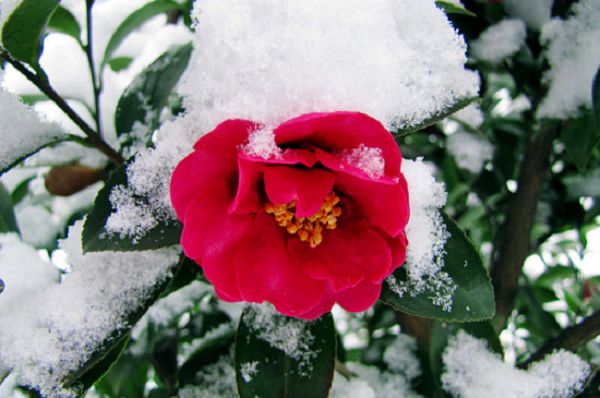How to deal with flowers after being flooded

The seasons in our country are changeable, and some areas suffer from overcast and rain during the long period of time, which leads to the waterlogging of flowers, while some flower friends suffer from waterlogging due to watering too much. No matter what causes the flowers to be waterlogged, once found, quick rescue measures can reduce the loss.
Camellia
The main contents are as follows: 1. Drainage for ground-planted flowers to open ditches and drainage, for potted flowers to dredge the bottom hole of the flowerpot, drain the stagnant water in the pot, move the flowerpot to a place where rain is ventilated and dry, and reduce the humidity of the potted soil. After waterlogging, the roots of flowers were damaged to a certain extent, and the absorption function decreased. In order to maintain the relative balance between root water absorption and foliar transpiration, foliar spray or anti-transpiration agent was sprayed with clear water while strengthening soil drainage, so as to reduce plant water loss and promote normal growth as soon as possible.
2. The consolidation of soil after stagnant water is the cause of anoxic rotting roots. After being flooded, the flowers should be ploughed and loosened in time to enhance the air permeability and meet the oxygen needs of the root system.
3. Change the soil and plane the wet soil on the surface of the root and replace it with dry soil. For potted flowers, plant ash or dry soil is applied on the potted surface to reduce the water content of the roots and promote the recovery of metabolic function. For the potted flowers with stagnant water for a long time, knock out the plant together with the soil ball from the basin, put it in a cool and ventilated place, make it evaporate water, and return to the basin for maintenance when it returns to normal water content three or four days later.
4. Keep the flowerpot in a cool and ventilated place to prevent sudden exposure to the sun. Due to the flowers after waterlogging, the root absorption function is obviously weakened, such as sudden sun exposure, aggravating the water loss of branch and leaf transpiration, resulting in wilting.
5. After the fertilizer control flowers were waterlogged, the root system was damaged to varying degrees, and the absorption function decreased significantly, so there was no need to apply fertilizer at this time, otherwise it would accelerate the death of the plant. When the root system returns to normal absorption and metabolism function, then fertilize, light fertilizer is applied frequently, and the concentration should not be too high.
- Prev

How to grow beautiful southern flowers in the north
How to grow beautiful southern flowers in the north
- Next

Which flowers bloom in winter? take an inventory of ten kinds of flowers that bloom in winter.
Which flowers bloom in winter? take an inventory of ten kinds of flowers that bloom in winter.
Related
- What if the leaves of potted flowers turn yellow?
- Florescence Control of several Flowers
- Anti-freezing technology and post-freezing nursing technology of flowers
- What is the classification of flowers? What are the common methods of flower classification?
- Prevention and control of alkali and acid damage of flowers in courtyard
- Technology of Anti-freezing and restoring growth of Flower seedlings in greenhouse and greenhouse
- How does flower fertilization not hurt the root? Fertilization technology of flowers
- Key points of disinfection in flower greenhouse
- Several pesticides that are banned or used cautiously in flowers
- How to fertilize the flowers that watch the leaves?

